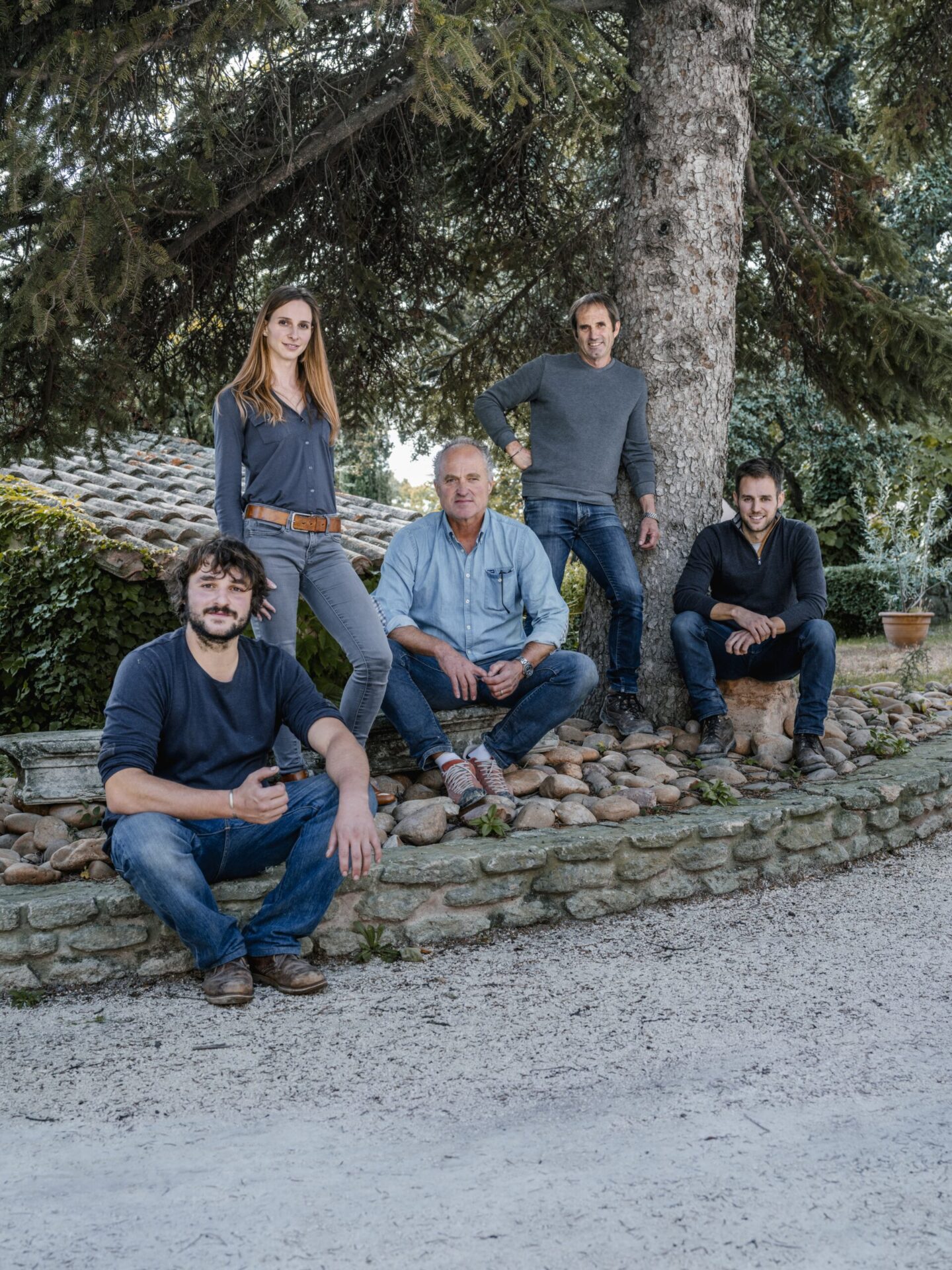2019 Domaine du Vieux Télégraphe Châteauneuf-du-Pape ‘Télégramme’
2019 was one of the best years we’ve seen for CDP. The wines have more depth and concentration that the 2018s and the structure is unparalleled. Snag this for the cellar!
Organic farming practices, dry-farmed, hand-harvested, unfined/unfiltered.
- Tasting Notes blackberry, plum, blueberry, fig, peppery herbs, crushed stone, leather, violets
- Variety 80% Grenache, 10% Syrah, 6% Mourvèdre, 4% Cinsault
- Region France, Rhone Valley
- Volume 750ml
- Alcohol Volume 14.5%
Original price was: $65.00.$55.25Current price is: $55.25.
Out of stock
It was Henri Brunier who penned the first chapter of this wonderful family story in 1891, in the village of Bédarrides, well known today as occupying the southeastern portion of the Châteauneuf-du-Pape AOC area. In that year, he gifted to his son Hippolyte some plots of land on La Crau, a place in those days considered practically unfit for cultivation, its soil a thankless proposition due to a high density of pebbles.
The latter planted his first vine stocks on this commanding plateau, where grapes had first been grown in the 14th century; and where, in 1821, Claude Chappe, inventor of the optical telegraph, built one of his signal towers. Hippolyte’s son, Jules, extended the estate to 42 acres and aptly named the fruits of his labours “Vieux Télégraphe.” At the end of the Second World War, Henri, the second thus named and the fourth generation, had the formidable task of reviving the estate and shaping its destiny. Not content with enlarging the Domaine to a single expanse of 136 acres, he gave this classic Châteauneuf-du-Pape wine its full dimension, creating a “Vieux Télégraphe” style and positioning it on all the world’s leading markets.
Since the early 1980s his two sons, Frédéric and Daniel, have been tending to the family concern.They now farm 247 acres in the Châteauneuf-du-Pape AOC area, and 49,5 acres of IGP Vaucluse and AOC Ventoux vines. Domaine Les Pallières must also be listed: acquired in 1998 in partnership with family friend Kermit Lynch, this single-plot 309-acre estate in Gigondas has 62 acres of vines. The year 1998 also marked the creation of Massaya in Lebanon in association with Sami and Ramzi Ghosn, which now makes wines from 123 acres of vines, planted mainly in the northeast Beqaa Valley.
After more than 125 years in existence, the Domaine and its associated vineyards, guided by the fifth and the sixth generations of vignerons, have kept all of its initial philosophy very much alive.
THE RHONE VALLEY, FRANCE
For ease of describing the Rhône Valley, we will associate the region by two distinct areas: The Northern Rhône and the Southern Rhône. The Northern Rhône, follows the River Rhône essentially from Vienne in the north down to Valence in the south. Many of their vineyards are planted on slopes situated next to the river as the valley is quite narrow and steep. There is a cold strong wind in this area, called the mistral, which can quickly damage the vines, so the valley serves as protection. The black grape variety, Syrah, dominates in the Northern Rhône. In fact, in many of the smaller appellations and crus, it is the only black grape variety allowed and produced. These wines tend to be a deep color and boast bold black fruit flavors with black pepper and florals. There are a few areas that allow for production of the white grape varieties: Viognier, Marsanne and Roussanne. Particularly, Condrieu and Château-Grillet appellations have a reputation for high-quality Viognier. The noteworthy crus of Northern Rhône for red wine include (but not limited to) Côte-Rôtie, Saint-Joseph, Hermitage, Crozes-Hermitage, and Cornas. To the south and closer to the Mediterranean Sea lies the much larger region of the Southern Rhône. With greater vineyard areas, the Southern Rhône is focused on predominantly red wine, but showcasing a vast range of red, white, and rosé wines from high-quality to inexpensive. Here the climate is considerably more warmer than in the north and the vineyards are on flatter terrain. The mistral winds are still of concern, so many of the vines are trained low to the ground for protection. To absorb some of the heat, many of the best vineyard sites have very stony soils. Particularly, in Châteauneuf-du-Pape, the stones (or galets) are large and completely cover the soil surface. Black grape varieties Grenache, Syrah, Mourvèdre, and Cinsault do best in this warm, sunny climate. Hence why you often see the term “GSM” Blend (meaning Grenache, Syrah, Mourvèdre) coined from this region, which many other regions have now adopted and use for their blends using these grape varietals. While white grape varieties are a minority to this region, Viognier, Marsanne, Roussanne, Clairette, Grenache Blanc, and Bourboulenc are grown here. Notable cru areas are Tavel, Lirac, Gigondas, Vacqueyras, and the infamous, Châteauneuf-du-Pape. Generic appellations of Côte du Rhône and Côte du Rhône Villages account for more than half of the entire production with the Southern Rhône, but don’t let the generic term fool you; These appellations, although not cru status, are also putting out some spectacular quality wines!








